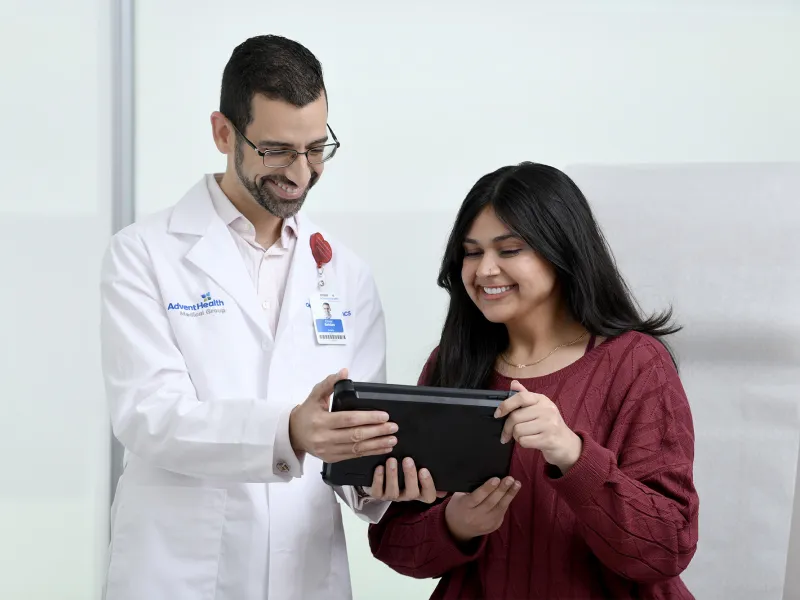
The AdventHealth Digestive Health Institute Offers Alternatives to Surgery That Can Provide Permanent Relief of Gerd Symptoms
While surgical fundoplication is the best way to cure GERD for most patients, for a variety of reasons some people are unable to have an operation. AdventHealth Digestive Health Institute expert surgeons are often able to offer these patients other treatments for GERD that do not involve surgery. These treatments use endoscopy, where a scope with a light and other instruments is inserted through the mouth. The scope is directed down to the lower esophageal sphincter, where the esophagus meets the stomach, to correct the anatomical changes that cause GERD.
These endoscopic treatments are also called transoral approaches because the procedures are performed through the mouth. While patients are under general anesthesia, no cuts are made to tissues during these procedures.
Endoscopic Treatments for GERD Offered
Transoral incisionless fundoplication is an endoscopic treatment performed through the mouth. The endoscope allows the surgeon to place an EsophyX device where the esophagus meets the stomach. EsophyX creates a 270 degree wrap similar to a surgical Toupet fundoplication. This wrap strengthens the closure between the esophagus and the stomach so that reflux no longer occurs.
TIF is an outpatient procedure, and patients need little-to-no recovery time afterwards. While TIF is not right for every patient, it can greatly benefit some. It is associated with high success rates, and some studies have shown it has results similar to those of surgical fundoplication procedures. The large majority of patients who have a TIF procedure find enough relief from GERD symptoms to be able to stop taking proton pump inhibitors (PPIs).
To view actual footage of this surgical procedure, please visit the PROCEDURE VIDEOS and ADDITIONAL RESOURCES page in the for medical professionals section of the site.
Another endoscopic approach to treat GERD is the Stretta procedure. It involves a thin tube called a catheter inserted through the mouth and down to the lower esophageal sphincter (LES). The catheter delivers low radiofrequency energy that heats the tissues of the LES and the part of the stomach joined to the LES. The physician can use this heat to reshape these parts of the anatomy. The result is that the LES works better at keeping acid contents out of the esophagus.
Many patients experience a decrease in GERD symptoms after having a Stretta procedure. The procedure typically provides relief for at least five years, and many patients are able to stop taking PPIs. It is an effective option, especially for those who have previously undergone a sleeve gastrectomy weight-loss procedure.
To view actual footage of this surgical procedure, please visit the PROCEDURE VIDEOS and ADDITIONAL RESOURCES page in the for medical professionals section of the site.

Meet Your Dedicated Experts
Our specialists are passionate about providing collaborative care that addresses your unique needs and goals while ensuring you feel informed and supported every step of the way. Learn more about our team and their areas of expertise.

Surgical Consultations For Digestive Cancer Without the Wait
Appointments Within Seven Days for Patients with Cancer
At AdventHealth Digestive Health Institute, we know that after being diagnosed with cancer, patients want and often need to begin treatment quickly. So we make it a priority to offer appointments for cancer surgery consultations within five business days, and often earlier.
Patients who are newly diagnosed with cancer, or have just found out they have cancer again, qualify for this priority access. Our surgeons will make themselves available to see you right away, even for a second opinion. We want to help you start your treatment as soon as possible.
Let Us Help You Feel Whole Again
Whether you’re experiencing new symptoms or want a second opinion on a diagnosis, our dedicated digestive health experts are here to help you find answers and a path forward. Request an appointment today to take charge of your health and get the personal support you need.
